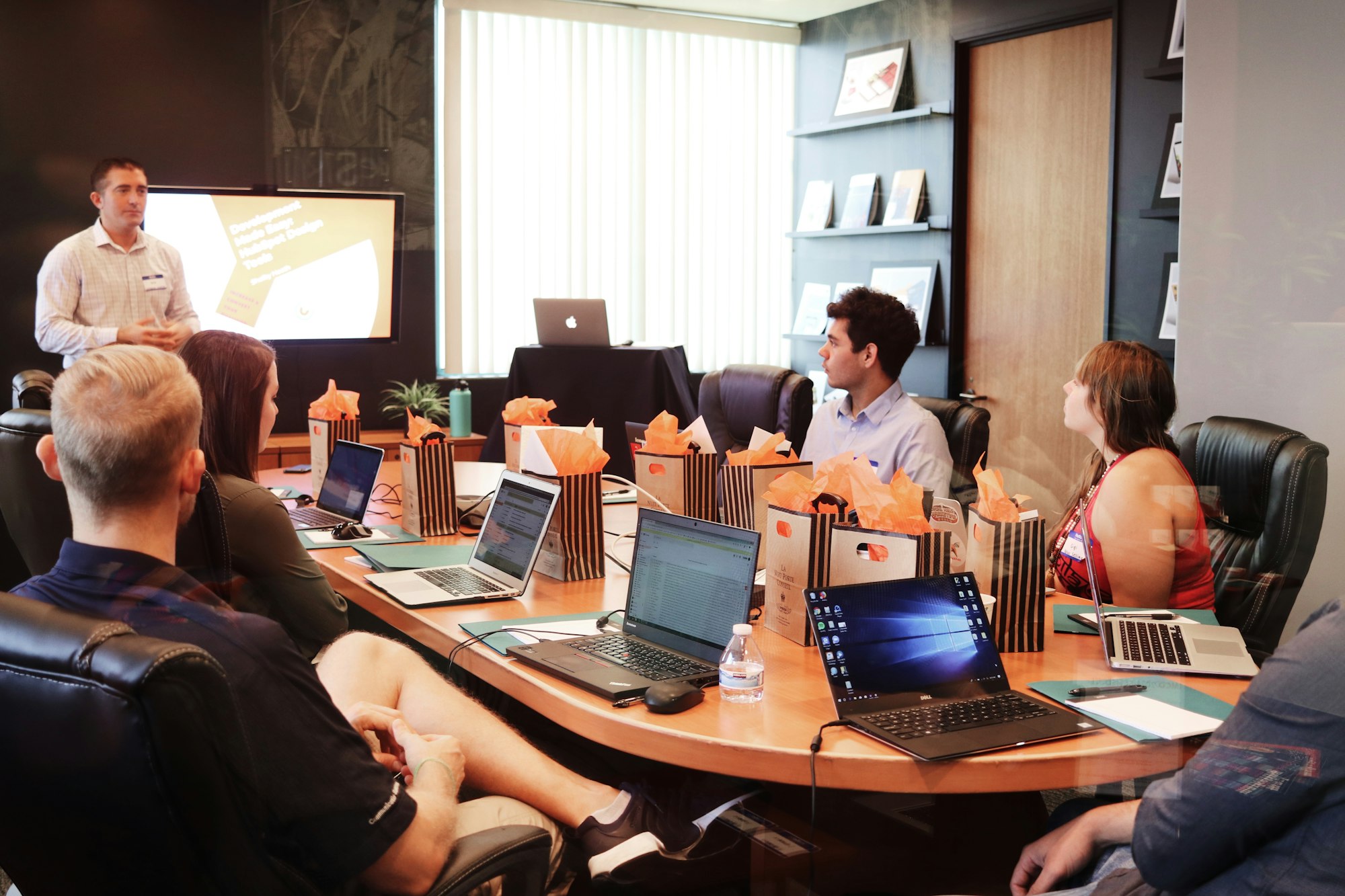The Benefits of Continuous Learning for Software Development Leaders

In the dynamic world of software development, the only constant is change. As leaders in this field, embracing a philosophy of continuous learning is not merely beneficial—it is essential for survival and success. Understanding and leveraging the power of ongoing education can transform good leaders into great ones, fostering environments where innovation, efficiency, and high morale flourish.
Why Continuous Learning is Crucial
Adapting to Technological Changes
In the ever-accelerating race of technology, software development leaders face the constant challenge of staying abreast of new developments. Whether it's the emergence of new programming languages, the evolution of software development methodologies like Agile and DevOps, or breakthroughs in artificial intelligence and machine learning, leaders must not only keep pace but also foresee potential impacts on their projects and teams. By engaging in continuous learning, leaders can decode trends and technologies before they become mainstream, enabling them to make informed decisions about which technologies will enhance their team's efficiency and product quality.
Moreover, adapting to technological changes isn't just about personal mastery; it's about leading teams through technological transitions. This requires not only understanding new technologies but also effectively communicating their benefits and implementations to the team. Leaders must also manage the resistance that often accompanies new technologies and methodologies, using their continuous learning as a tool to inspire and educate, transforming uncertainty into opportunity.
Enhancing Leadership Skills
Leadership within software development extends far beyond technical expertise. As a leader evolves, soft skills become increasingly crucial. Skills such as effective communication, strategic decision-making, and the ability to motivate and inspire teams are paramount and can be honed through continuous learning. By dedicating themselves to learning, leaders can discover new leadership theories and practices, adapt their styles to meet the needs of their team, and respond adeptly to a variety of situations with poise and confidence.
Continual learning also equips leaders to handle the complex interpersonal dynamics that characterize modern work environments. This includes navigating diverse teams, resolving conflicts, and fostering a positive work culture. These skills are often cultivated through real-world experiences and refined through formal education like workshops, seminars, and reading both classic and contemporary works on leadership. This blend of theory and practice enriches a leader’s ability to guide their team effectively, ensuring they are not just managers, but true leaders who inspire growth and change.
Fostering Innovation
Creating an environment where innovation thrives starts with a leader's commitment to their own learning and extends to the entire organizational culture. When leaders are constantly exploring new concepts, technologies, and strategies, they set a tone that challenges and inspires their team to do the same. This can lead to groundbreaking developments and solutions that push the team and the organization forward. An innovative leader views failures and setbacks as valuable learning opportunities, fostering a risk-tolerant culture that encourages experimentation and creative problem-solving.
Moreover, when a leader actively promotes and participates in learning initiatives, it signals to the team that seeking new knowledge and challenging existing norms are valued behaviors. This can stimulate intellectual curiosity and lead to a more engaged and proactive team. Leaders might facilitate this by introducing 'hackathons', sponsoring attendance at innovative workshops or conferences, or simply by encouraging team discussions around 'what if' scenarios that explore new possibilities.
How to Implement Continuous Learning
1. Structured Learning Pathways
For continuous learning to be truly effective, it must be structured and integrated into the fabric of the organization. Leaders can create learning pathways that are tailored to the developmental needs of their teams, identifying specific skills and knowledge areas that align with both current projects and future growth. These pathways might include a mix of formal training, online courses, and hands-on projects that apply new skills in real-world scenarios. By mapping out a clear pathway, leaders not only make the learning process more systematic but also more measurable, allowing for adjustments as team needs and industry dynamics evolve.
Structured learning pathways also help in democratizing learning across the team. By making resources accessible and establishing clear expectations for their use, leaders ensure that all team members have equal opportunities to grow. This might involve setting aside dedicated time during work hours for learning activities, thereby reinforcing the organization's commitment to professional development. Regular check-ins and discussions about what is being learned can further enhance the relevance and impact of these learning pathways.
2. Learning in the Flow of Work
Integrating learning with daily work activities, or learning in the flow of work, makes development a natural part of the daily routine rather than an interruption. This approach leverages the immediate relevance of learning materials to the tasks at hand, which can significantly enhance retention and application of new knowledge. For instance, incorporating brief learning modules into the start of a coding session on a new framework, or discussing best practices in code review during the review process itself, can provide immediate practical benefits and improve learning outcomes.
This method also supports just-in-time learning — providing information right when it is needed, which enhances its effectiveness and application. Software development leaders can facilitate this by maintaining a repository of resources that can be accessed as needed, encouraging the use of pair programming to share skills among team members, and using tools like chatbots or AI-driven recommendations to suggest learning content relevant to the problems the team is currently solving.
3. Mentoring and Coaching
Mentoring and coaching are vital components of a learning culture. Through mentoring, more experienced team members can pass on valuable industry knowledge and insights, helping newer employees to navigate the complexities of the field and accelerate their learning curve. This relationship not only benefits the mentee but also offers mentors the opportunity to refine their leadership and teaching skills, creating a mutually beneficial learning environment.
Coaching, whether it’s peer-to-peer or from leader to subordinate, focuses on unlocking a team member's potential to maximize their own performance. It is a guided method that helps individuals reflect on their experiences, identify their own solutions to challenges, and enhance their career trajectories. Effective coaching involves asking powerful questions that prompt critical thinking and self-reflection, fostering a deeper understanding of one’s role and how to improve within it. Both practices not only support individual development but also strengthen team bonds, creating a more cohesive and supportive workplace.
Case Studies and Real-World Examples
Consider the case of a tech giant like Google, which institutionalizes continuous learning through its famed "20% time" policy, allowing employees to spend one day a week working on side projects that interest them. This policy has led to the creation of some of Google's flagship products, demonstrating the tangible benefits of fostering an innovative learning culture.
Another example is a small software startup that adopted pair programming as a core part of its development process. This approach not only improved code quality but also facilitated real-time knowledge transfer between senior and junior developers, accelerating the learning curve for the entire team.
The Long-Term Impact of Continuous Learning
The long-term benefits of fostering a continuous learning culture in software development are immense. Teams that learn together grow together, becoming more cohesive and adaptive. For leaders, the personal growth facilitated by continuous learning can lead to career advancements and opportunities that might not otherwise have been accessible.
Moreover, companies that prioritize learning are often seen as more attractive to top talent. High-caliber professionals seek environments where they can grow and be challenged, and a culture of learning can be a significant draw.
Conclusion
For software development leaders, continuous learning is not just about keeping up with the latest programming languages or development frameworks. It's about cultivating a mindset that values growth, innovation, and the relentless pursuit of excellence. By embedding learning deeply into the fabric of our teams and our leadership practices, we not only enhance our own capabilities but also elevate the entire team, setting a standard that can lead to profound organizational success.
In the words of philosopher Eric Hoffer, "In a time of drastic change, it is the learners who inherit the future." For software development leaders, these are words to lead by.

